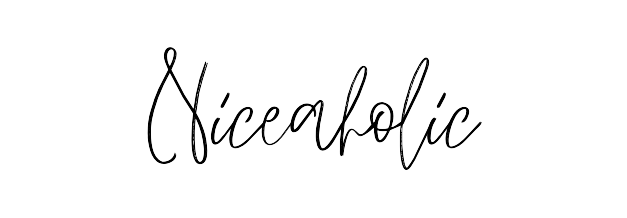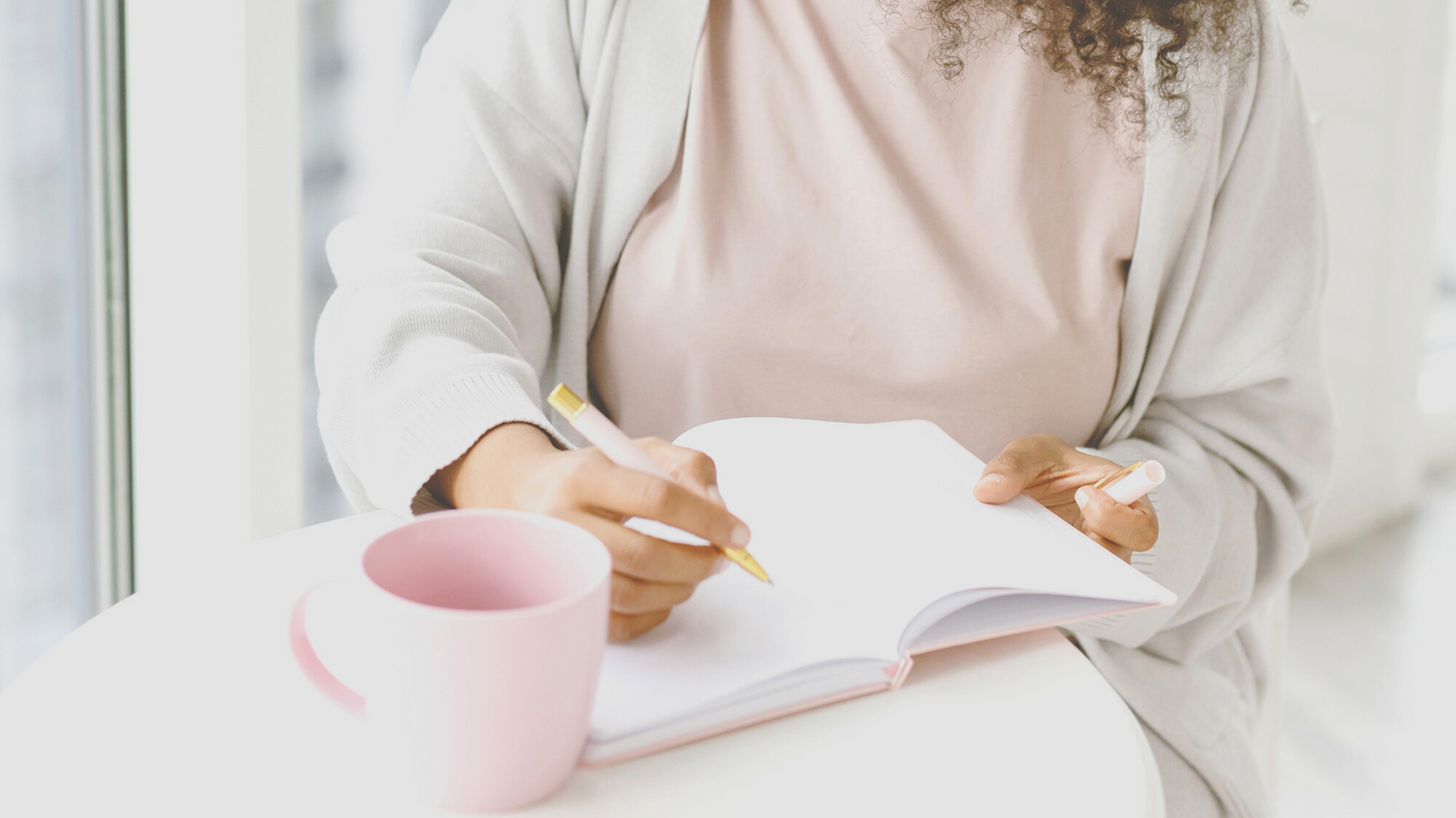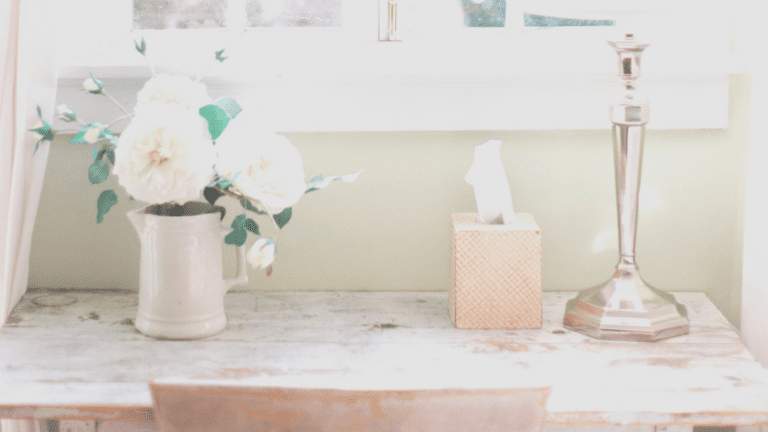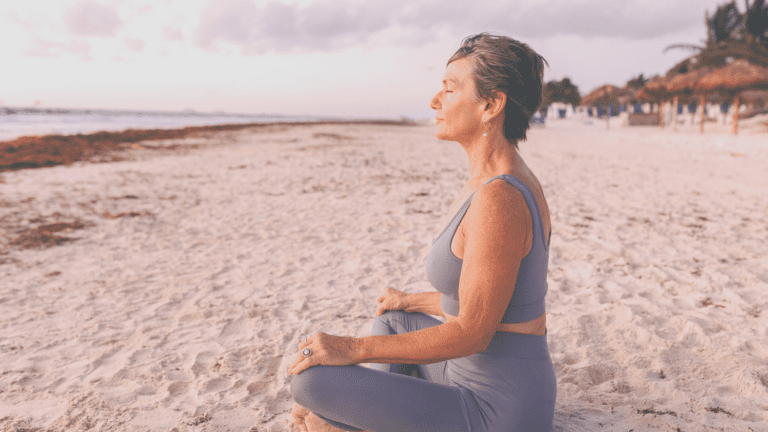This is How I Learned to Say No
I want to share with you today, how I learned to say no as a long time scaredy cat.
Learning to say no is a crucial skill that can be difficult to master. Saying no can be especially challenging for us Niceaholics, as we want to please others and are scared of rejection.
However, setting boundaries and learning to say no can be life-changing skills that help us prioritize our own needs and prevent burnout.
Don’t forget to pin this for later!
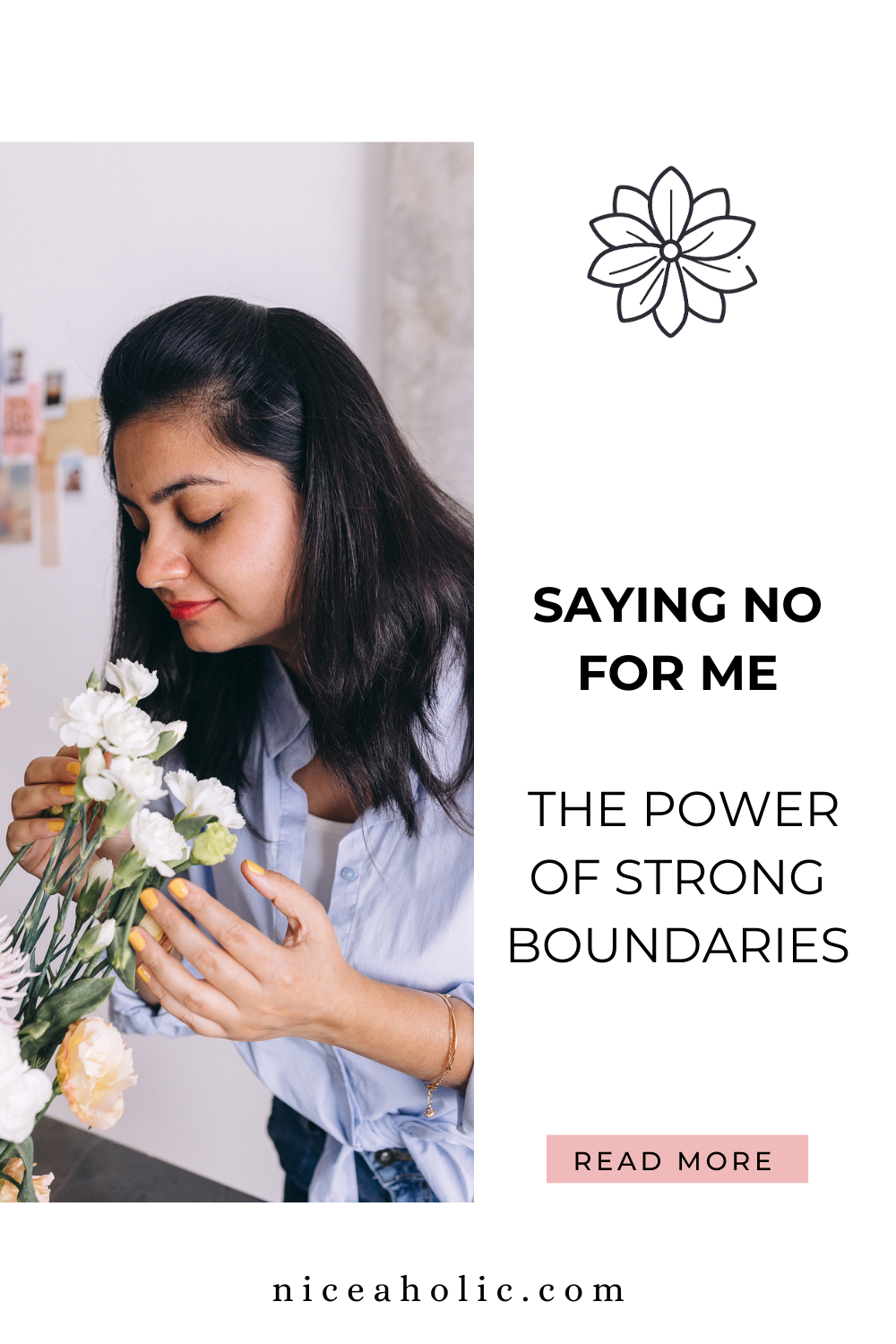
Personally, I struggled with saying no for a long time.
I often found that as a niceaholic myself, I would take on too much and end up feeling overwhelmed.
It wasn’t until I experienced complete burnout (I don’t recommend it!) that I realized the importance of setting boundaries and learning to say no.
Through trial and error, I developed strategies to help me say no in a way that felt comfortable and authentic to me.
In this article, I will share my journey and the strategies I found most helpful in learning to say no.
I hope it helps you, too, hun. 😊
Understanding the Power of Saying No
Saying no can be a powerful tool in taking control of your life. It can help you set boundaries and prioritize your own needs.
Saying yes to everything can lead to burnout and resentment, but learning to say no can help you feel more in control and less overwhelmed.
When I first started saying no, it was difficult.
As a chronic people-pleaser, I was worried about disappointing people and being seen as difficult.
At first, I struggled to bring myself even to say the word no. My heart would beat like crazy!
But as I learned to say no more often, I realized that saying no was very empowering (and quite addictive!).
People weren’t angry with me, and most of the time, they just said, that’s fine.
Like what? I have made myself sick about this, and you say, “ok”?
Surely, it couldn’t be this easy.
But yes, it was. I could finally prioritize my own responsibilities and priorities, and I felt more in control of my life.
I wondered why I had waited so long, ha-ha!
One thing that helped to make saying no easier for me was to have a clear understanding of my values and priorities.
When you know what’s important to you, it’s easier to say no to things that don’t align with those values.
I also realized that when you live a life for other people, you can find your own life is drifting away, and you aren’t spending it on things that are important to you.
It’s okay to prioritize your own needs and say no to things that don’t serve you.
Remember that saying no doesn’t make you a bad person.
It can feel a bit aggressive at first because you aren’t used to it but other people say no all the time, it’s ok!
It takes time to learn to say no.
Another way to make saying no easier is to have a script prepared.
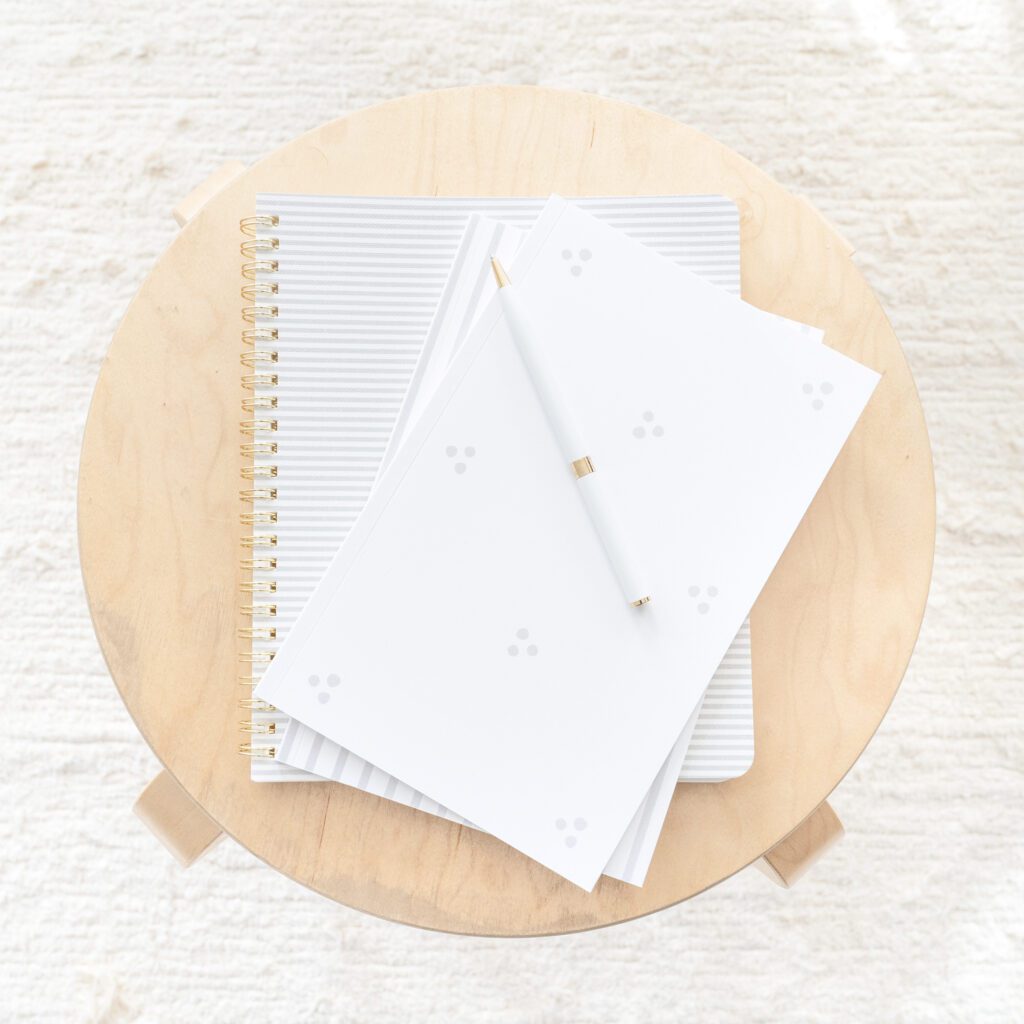
This can be especially helpful if you struggle with anxiety or find it difficult to say no in the moment.
Practice saying no (or I’ll let you know later) in a firm but polite way, and have a few different responses prepared for different situations.
Overall, understanding the power of saying no can be a game-changer in taking control of your life.
Don’t be afraid to set boundaries and say no when it’s necessary.
It can be difficult at first, but with practice, it can become a valuable tool in living a more fulfilling life.
Recognizing the Fear of Rejection
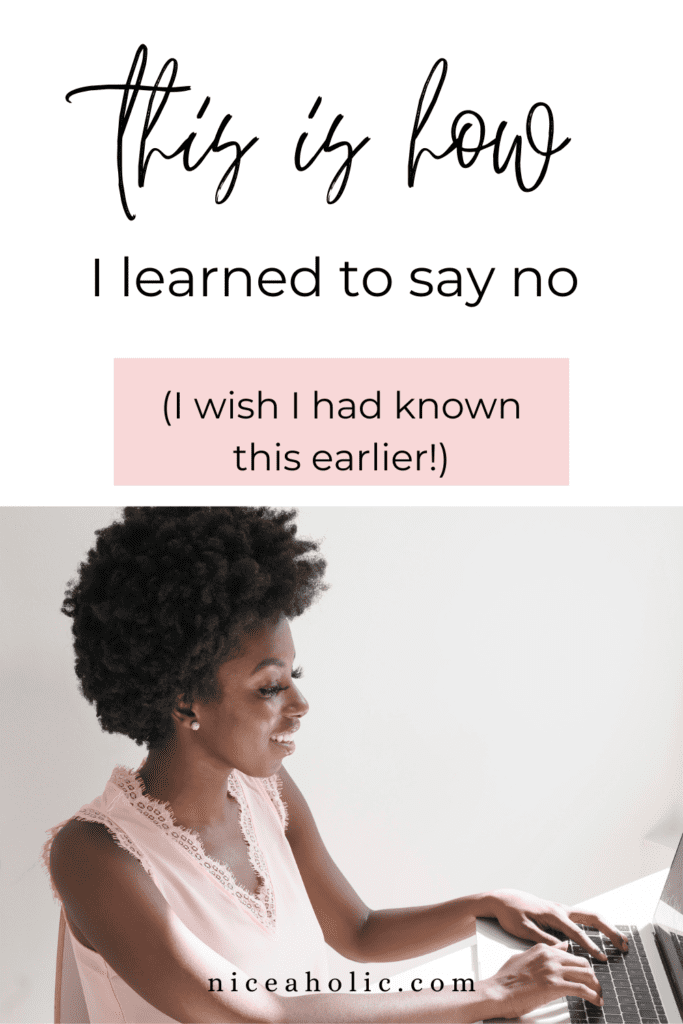
As someone who used to struggle with saying no, I know firsthand how difficult it can be to recognize the fear of rejection.
It’s easy to convince yourself that you’re just being helpful, accommodating or nice, but often, those actions are rooted in a fear of disappointing others or being rejected.
One way to recognize this fear is to pay attention to your physical and emotional reactions when someone asks you for something.
Do you immediately feel anxious or overwhelmed? Do you have a pit in your stomach or a racing heart?
These are all signs that you may be operating from a place of fear rather than a genuine desire to help.
Another way to recognize this fear is to examine your thought patterns.
Do you tell yourself that saying no will make you a bad person or a bad friend?
Do you worry that others will think less of you if you don’t say yes?
I used to think this, too, but it turned out to be the opposite.
People respected me for being honest with them and were very understanding.
So, recognize these unhelpful thoughts are often based on a fear of rejection and can hold you back from setting healthy boundaries.
It’s important to remember that saying no is not a reflection of your worth as a person.
It’s okay to prioritize your own needs and boundaries, even if it means disappointing others.
By recognizing and addressing your fear of rejection, you can learn to say no with more confidence.
Building Self Confidence
Embracing Self Worth
One of the most important steps in learning to say no, I found, is to embrace your self-worth.
I used to struggle with saying no because I thought other people’s things were more important than mine, and I didn’t want to be seen as selfish.
However, I realized that by constantly saying yes to others, I was neglecting my own needs and desires. Putting myself in the position of being treated poorly and feeling resentful.
To build my self-confidence, I kept referring back to my values and priorities and reminded myself I was giving these away when I helped others too much.
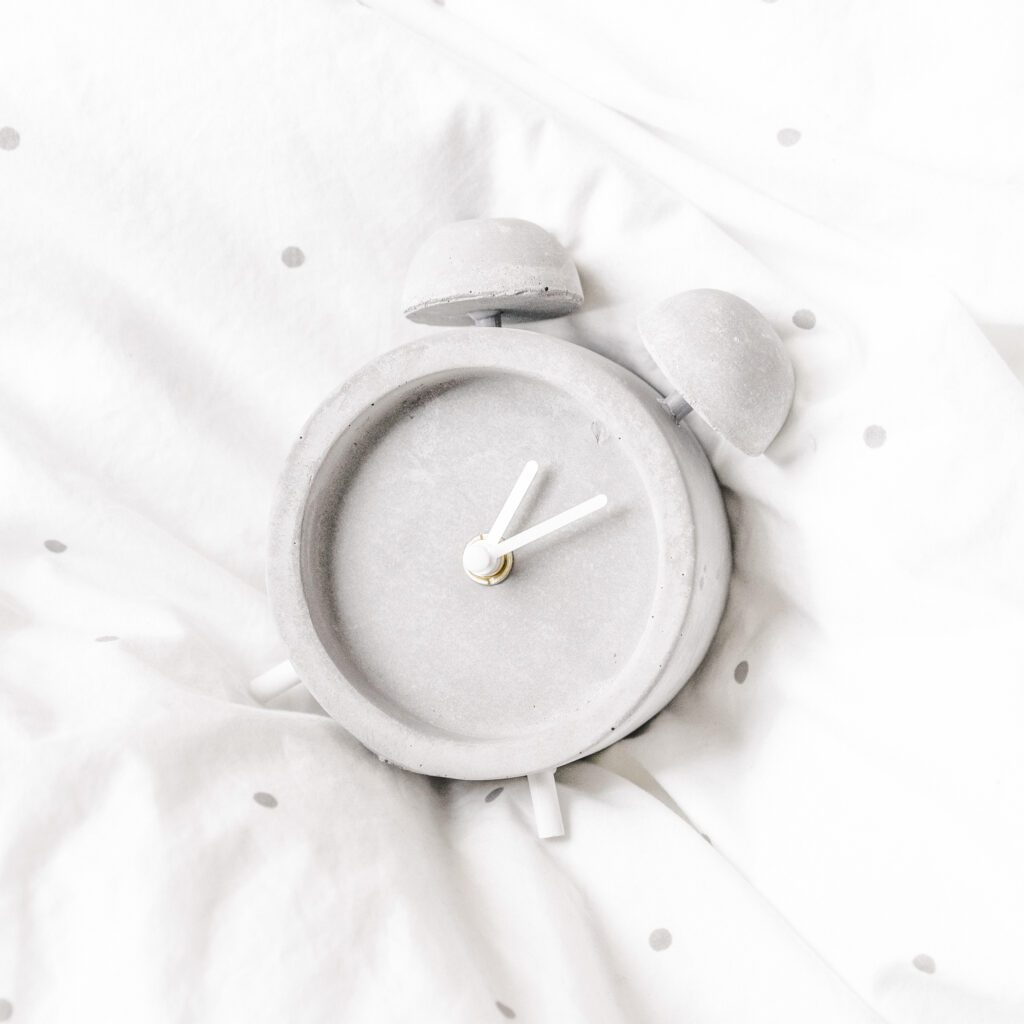
It was mainly my time with my daughter I was giving away to catch up with people and help. As she is growing up fast, my time with her is limited, so that really opened my eyes to how damaging not saying no was.
I used affirmations to reassure myself I was allowed to say no and I found comfort in realizing that old childhood beliefs of “being seen and not heard” were at play, too.
I would remind myself that I was an adult and allowed to say no now.
Overcoming Self Doubt
Self-doubt can be a major obstacle when it comes to saying no.
I used to worry about what others would think of me if I said no or if I was making the right decision.
However, I learned that it’s important to trust my instincts and listen to my inner voice.
In the past, I had been criticized a lot and was now finding decision-making difficult.
To overcome my self-doubt, I started practicing self-compassion and reminding myself that it’s okay to make mistakes.
My favorite affirmation was, “There are no mistakes, just lessons”.
I also practised with “safer people” like friends and family members and made low-risk decisions so I could learn to trust myself again and prioritize my own needs and well-being.
By embracing my self-worth and overcoming my self-doubt, I was able to build my confidence and become more comfortable saying no when necessary.
Practical Steps to Saying No
Identifying Boundaries
The first step to saying no is to identify your boundaries. It’s important to know what you’re comfortable with and what you’re not.
Take some time to reflect on your values and priorities and set clear boundaries for yourself.
This will help you avoid overcommitting and feeling overwhelmed.
One way to identify your boundaries is to pay attention to your physical and emotional reactions.
If you feel tense or anxious when someone asks you to do something, it may be a sign that you’re not comfortable with the request.
Download my
beautiful boundaries planner
Trust your instincts. Your heart knows what it does and doesn’t want, and don’t be afraid to say no.
Communicating Boundaries Effectively
Once you’ve identified your boundaries, the next step is communicating them effectively.
This can be challenging, especially when, as a niceaholic like me, you’re used to saying yes to everything.
However, there are some strategies that can help.
One effective strategy I learned to use when I say no, is to use “I” statements.
For example, instead of saying, “No, I can’t do that,” try saying, “I’m not able to do that right now.”
This approach is more assertive and less confrontational and great for beginners or softies like me 😊
Another strategy is to offer an alternative.
If you’re not able to do something, suggest someone else who might be able to help. This shows that you’re willing to be helpful but also respect your own boundaries.
Remember again, saying no is not selfish.
It’s important to take care of yourself and your own needs. You are the only person whose job it is to do this.
By setting clear boundaries and communicating them effectively, you can say no with confidence and without guilt.
Dealing with the Aftermath of Saying No
Don’t forget to pin this for later!
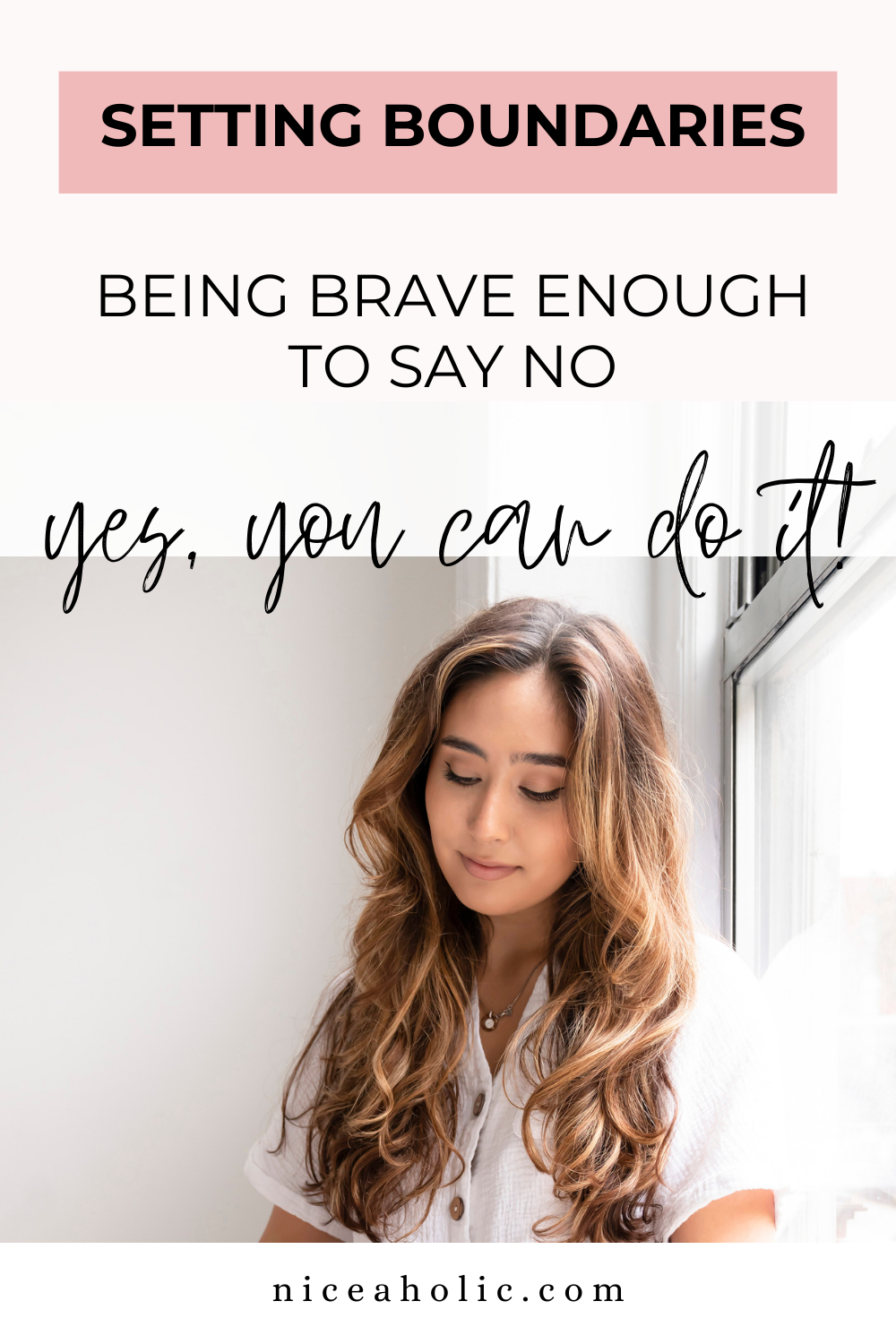
Handling Guilt
After saying no to someone, it’s common to feel guilty about it.
However, it’s important to remember that saying no is not a bad thing. (Have I said that enough, yet?)
You are allowed to prioritize your own needs and boundaries.
To handle guilt, I remind myself that I have the right to say no and that it’s not my responsibility to please everyone.
I also try to focus on the positive aspects of saying no, such as feeling more in control of my time and energy.
Managing Relationships
Saying no can sometimes strain relationships, especially if the other person doesn’t understand or respect your boundaries.
To manage relationships after saying no, I try to communicate openly and honestly with the other person.
I briefly (don’t overexplain here) explain my reasons for saying no and emphasize that it’s not a personal rejection. I also try to find alternative solutions or compromises that work for both of us.
By being honest and saying no, you are actually being a good friend/person because you are being authentic.
It’s important to remember that healthy relationships involve mutual respect and understanding of each other’s boundaries.
Final Thoughts
Learning to say no has been a game-changer for me.
It has allowed me to prioritize my time and energy on things that truly matter to me, like being with my gorgeous daughter.
Saying no can be difficult, especially if you are a people-pleaser like me, but it is essential for your mental and emotional well-being.
Through trial and error, I have found that being honest and direct is the best approach when saying no.
It is important to remember that saying no does not make you a bad person or a bad friend.
It simply means that you value your time and energy and want to use it in a way that aligns with your goals and values.
Another important lesson I have learned is the power of setting boundaries.
By setting clear boundaries, you can prevent others from taking advantage of your time and energy.
It is important to communicate your boundaries clearly and stick to them, even if it means saying no.
In conclusion, learning to say no and setting boundaries has been a transformative experience for me.
It has allowed me to live a more peaceful life and prioritize the things that truly matter to me.
I don’t feel guilty anymore and am feeling a lot happier and more at peace these days. I’m so glad I learned to say no!
Remember, you are allowed to say no too; it’s not selfish, and it is essential for your well-being.
Always take care of yourself and know you aren’t alone.
You can do this: start small and be kind to yourself.
Love

Let’s Discuss
Does saying no give you the nervous nellies? Or do you have some tips for us that have helped you say no? Share them with us below in the comments.


Beautiful boundaries
A nice girl’s guide to setting strong boundaries
Get your 13-page guide designed to help you build confidence and say no politely, yet firmly.
Free when you subscribe to my email list as my thank-you gift to you.
